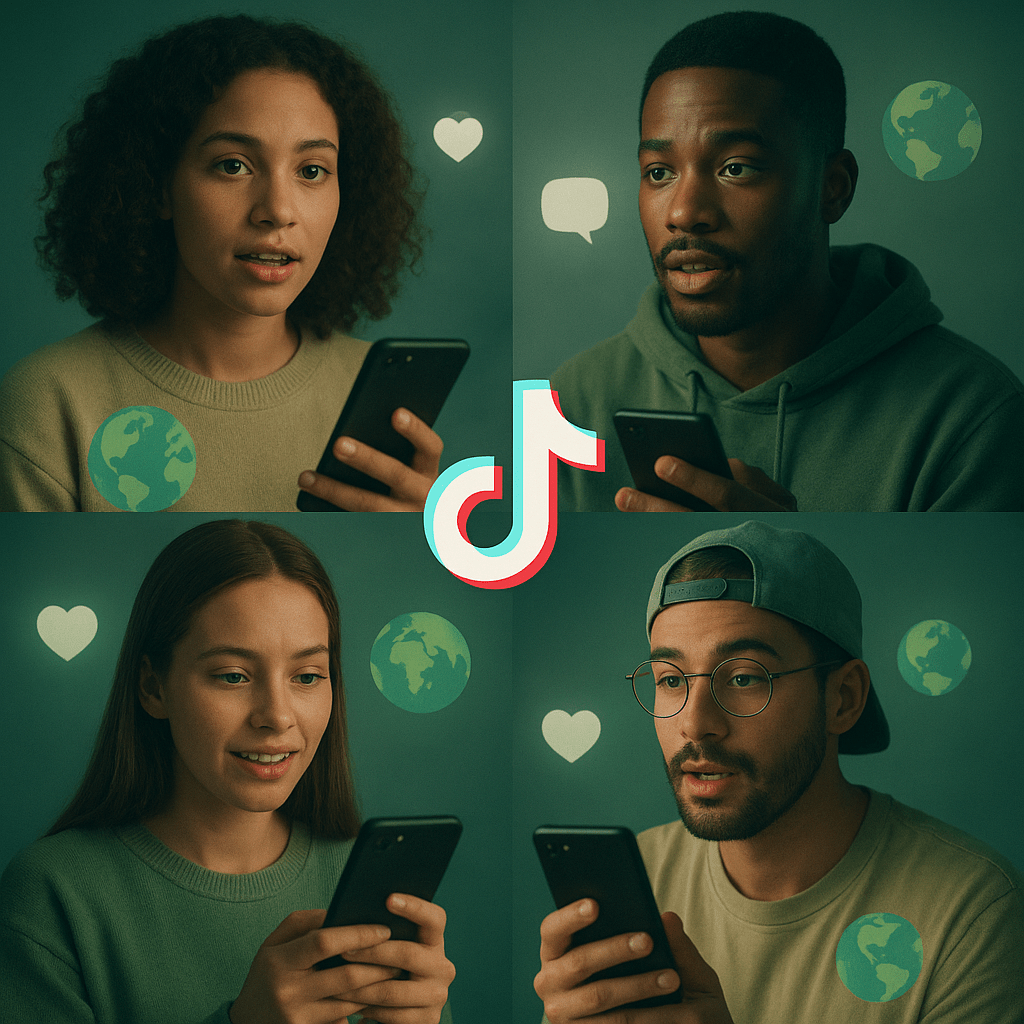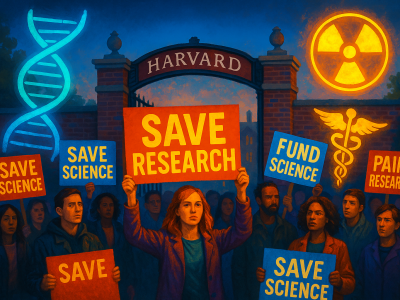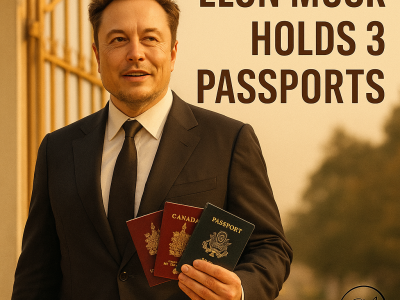In the age of short videos and scrolling feeds, environmental communication has found a new home on TikTok. A new study by Shreya Dubey, Marijn Meijers, Eline Smit, and Edith Smit from the Amsterdam School of Communication Research, University of Amsterdam, has revealed the types of environmental messages that circulate, who delivers them, and what makes people engage. The research, published in Environmental Communication, analysed 1,515 TikTok videos in English and Spanish to map the emerging dynamics of digital environmental discourse.
The rise of environmental TikTok
TikTok, with more than 1.8 billion users worldwide, has become one of the most influential social media platforms for younger audiences. Around 85 per cent of its users are under 35, making it a powerful space to observe how younger generations perceive and interact with environmental issues.
Dubey and colleagues’ study shows that while global environmental conversations were once dominated by traditional platforms like Twitter or Facebook, TikTok’s visual storytelling and participatory culture have created an entirely new ecosystem. The research team examined videos tagged with popular environmental hashtags in both English and Spanish, covering topics such as sustainability, biodiversity, waste management, and pollution.
Unlike the conventional focus on climate change in academic and media discussions, TikTok’s users appear to be expanding the environmental conversation. Only around seven per cent of analysed videos focused primarily on climate change. Instead, creators discussed biodiversity, sustainable lifestyles, vegan food, and pollution. These diverse subjects also attracted higher engagement, indicating that TikTok audiences respond more strongly to content that connects environmental issues to daily life.
Beyond climate change
According to the study, videos about plant-based diets and waste management received significantly more views, likes, and shares than those on climate change. This shift suggests that audiences may be fatigued by climate discourse or that users prefer tangible, relatable topics that offer individual agency. By moving away from abstract global warming debates toward everyday environmental actions, TikTok’s content seems to prioritise diverse topics in the public conversation around planetary health.
This observation aligns with the planetary boundaries framework, which identifies nine environmental processes essential for Earth’s stability, such as biodiversity, freshwater use, and chemical pollution. By highlighting issues like waste and consumption, TikTok creators may be inadvertently promoting a more holistic understanding of sustainability.
The power of storytelling
The research revealed that TikTok’s emotional and narrative-driven content far outperformed factual or purely informational videos. Emotional appeals were strongly associated with higher engagement across all metrics, including likes, comments, and shares. On one hand, this shows the power of storytelling, but on the other hand, the algorithm-driven promotion of emotional content may overshadow factual discussions about the environment.
Videos that featured personal stories or experiences were especially successful. Audiences responded more positively when creators shared their own encounters with environmental challenges rather than presenting distant or abstract information. This finding supports communication theories suggesting that personal narratives increase empathy and identification, making complex issues more accessible.
Interestingly, posts framed within a global context rather than local or unspecified ones, received greater engagement. Dubey and her co-authors suggest that global framing may enhance the perceived urgency of environmental issues while connecting local experiences to broader planetary challenges.
Emotion over information
Although most TikTok videos aimed to inform, viewers were far more drawn to emotion-based content. The researchers found that emotional messages generated up to four times more engagement than purely informational ones. These emotive videos ranged from heartfelt appeals about wildlife protection to dramatic presentations of pollution or deforestation.
Emotions serve as critical drivers for online virality. By evoking empathy, outrage, or inspiration, they create a personal connection between audiences and environmental issues. The study indicates that affective storytelling not only captures attention but may also foster pro-environmental attitudes. This aligns with previous findings that emotional cues in social media content can activate personal responsibility and collective concern.
Social media is vital for coordinating environmental awareness and action. While the TikTok discourse is nuanced, ambiguous messaging and competition with entertainment-first content and platform curation may undercut the visibility and engagement with environmental content.
–Shreya Dubey
Who leads the conversation?
TikTok’s environmental discourse is driven primarily by individuals rather than institutions. More than 60 per cent of the analysed videos were posted by personal accounts, including influencers, activists, and content creators. In contrast, sustainability organisations, NGOs, and governmental actors contributed a much smaller proportion of content and received lower engagement.
Governmental accounts received only a fraction of the views, likes, and shares achieved by individual creators. Similarly, sustainability organisations’ posts were often less visible. This imbalance suggests that credibility on TikTok may depend less on institutional authority and more on perceived authenticity and relatability.
Young audiences, in particular, tend to trust creators who mirror their own experiences. While this trend fosters grassroots participation, it also raises concerns about the accuracy and reliability of information shared by non-experts. Dubey and her team recommend collaborations between individual creators and credible institutions to combine authenticity with scientific accuracy.
The sound of engagement
TikTok’s unique audio-visual format plays a significant role in shaping engagement. The study found that videos using diegetic or performance-based audio, such as lip-synced dialogue or popular background sounds performed better than those using original audio. Pre-existing sound templates and trending tracks help creators tap into shared cultural references, making their content more discoverable.
Likewise, videos that combined narration over sequences of images or used found footage received more comments and shares than simple talking-head videos. These creative approaches exploit the platform’s algorithmic preferences for dynamic visuals and sound, maximising exposure.
Language and geography matter
By analysing both English and Spanish content, the study also revealed linguistic and regional differences in environmental engagement. Spanish-language TikToks about pollution and environmental degradation drew particularly strong audience interaction, suggesting heightened awareness of these issues in the Global South.
In contrast, humorous or light-hearted environmental videos performed better in English but not in Spanish. The researchers propose that humour may not translate equally across linguistic or cultural contexts, and communicators should adapt tone and style according to their target audience.
This bilingual approach highlights that environmental communication is far from monolithic. The issues that resonate in the Global North may not hold the same significance elsewhere, and local environmental realities shape how audiences engage with global ecological narratives.
Implications for science communication
Dubey’s findings carry practical lessons for scientists, educators, and policymakers eager to reach younger audiences. To capture attention on platforms like TikTok, communicators should focus on storytelling, authenticity, and emotion rather than relying solely on facts or policy-heavy messaging.
Videos that combine global framing with personal experience tend to elicit stronger emotional responses and higher engagement. Similarly, creators who openly express their environmental values or ideologies, whether anthropocentric or ecocentric receive more interaction than those whose stance remains implicit. Transparency about beliefs and motivations appears to strengthen audience trust and interest.
The research also warns against overly neutral or ambiguous content. Nearly 43 per cent of the analysed videos conveyed no clear sentiment toward the environment, and these neutral posts generated lower engagement. Communicators aiming to inspire change must therefore move beyond neutrality to convey conviction and clarity.
The broader significance
This study demonstrates that social media platforms like TikTok are not merely spaces for entertainment but vital arenas for public discourse about sustainability. The decentralised nature of TikTok allows individuals to shape narratives, challenge traditional gatekeepers, and redefine environmental activism for digital-native generations.
Yet, this democratisation comes with challenges. While accessibility increases, misinformation and ideological ambiguity can dilute scientific accuracy. The authors call for partnerships between researchers, influencers, and educational organisations to ensure that high-engagement content also maintains factual integrity.
Moving forward
As six of the nine planetary boundaries have already been crossed, effective environmental communication has never been more urgent. Dubey’s study provides a roadmap for scientists and environmental advocates who want to reach wider audiences in the digital age. By embracing creativity, emotion, and inclusivity, environmental communication can evolve beyond academic and institutional boundaries to inspire global engagement.
The findings ultimately suggest that TikTok is more than a fleeting trend. It represents a shift in how societies discuss, understand, and act upon environmental challenges. Scientists, communicators, and other actors in the environmental movement must adjust and respond to this fast-paced, emotionally driven digital landscape.
Reference
Dubey, S., Meijers, M. H. C., Smit, E. G., & Smit, E. S. (2025). Talking environment on TikTok: Messages, social actors, and engagement. Environmental Communication, 19(4), 723–748. https://doi.org/10.1080/17524032.2025.2453232







